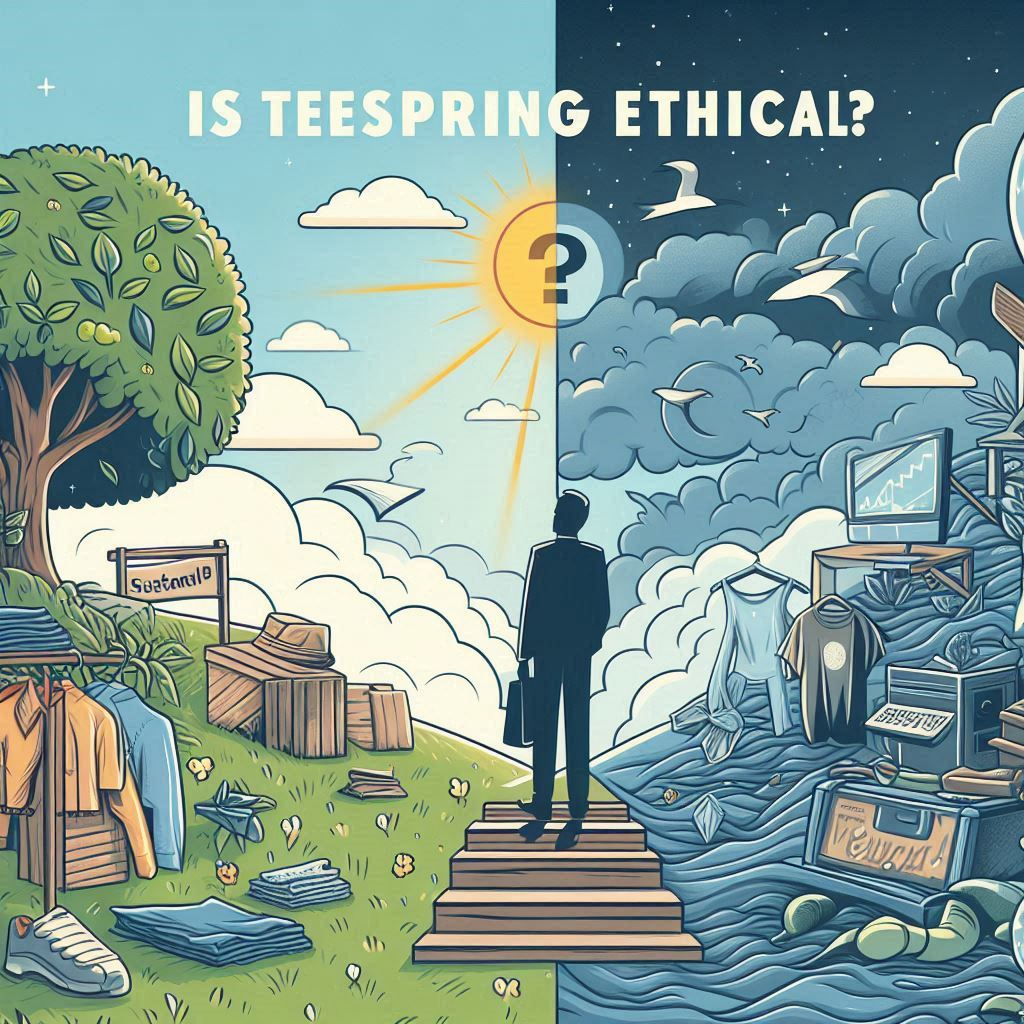As conscious consumerism gains momentum, it’s only natural to question the ethical practices of the brands we support. Teespring, now known as Spring, a popular platform for creating and selling custom merchandise, is no exception. When searching online for “Teespring ethical” or “Teespring sustainability,” a clear picture isn’t readily available. This blog post aims to delve into Teespring’s sustainability and production practices, providing an objective assessment of its ethical considerations, especially when it comes to the question of “Teespring where are products made.”
Table of Contents
- Teespring’s Business Model: A Foundation for Sustainability?
- Production Practices: Transparency and Supplier Ethics
- Materials and Environmental Impact
- Packaging and Shipping: Reducing Waste in the Supply Chain
- User-Generated Content and Teespring’s Responsibility
- Intellectual Property: Safeguarding Creativity
- Overall Ethical Assessment: Room for Improvement
- FAQ
Teespring’s Business Model: A Foundation for Sustainability?
Teespring operates on a print-on-demand model, meaning products are only manufactured after a customer places an order. This significantly reduces waste compared to traditional retail models, which often rely on mass production and result in unsold inventory. Considering the enormous environmental impact of the fashion industry – with millions of tons of textile waste ending up in landfills annually – Teespring’s model presents a potential solution. By producing only what is ordered, the company minimizes the likelihood of contributing to the growing problem of textile waste.
Production Practices: Transparency and Supplier Ethics
A crucial aspect of ethical sourcing and production is transparency. However, when searching for information about where Teespring products are made, their public website lacks specific details regarding their manufacturing locations and partner factories. This lack of transparency, a common issue when researching “Teespring where are products made,” raises concerns about the ethical practices employed across their global network of suppliers, especially in the context of fast fashion. While Teespring claims to uphold an ethical code of conduct for suppliers, encompassing labor rights, health and safety regulations, and ethical business practices, providing more detailed information about supplier selection, auditing procedures, and working conditions would significantly enhance their ethical image. Customers want to be assured that the products they purchase are made in factories that treat workers fairly and uphold ethical standards.
Materials and Environmental Impact
Teespring products commonly utilize materials like cotton and polyester. Cotton, a popular choice for apparel, comes with environmental concerns like high water consumption and pesticide use. Organic and sustainably-sourced cotton are more responsible alternatives. Polyester, on the other hand, is a synthetic material derived from fossil fuels, contributing to microplastic pollution. Recycled polyester can be a more sustainable option. However, finding precise information about the specific materials used in Teespring products and their origins proves challenging on their website. Greater transparency regarding material choices, as well as embracing options like organic cotton or recycled polyester, would further strengthen their sustainability efforts.
Packaging and Shipping: Reducing Waste in the Supply Chain
Teespring has made strides towards reducing their environmental footprint by minimizing plastic packaging and transitioning towards paperless operations. These initiatives align with a growing trend in e-commerce towards sustainable packaging and deserve recognition. To further their commitment to conscious commerce, Teespring could consider offering carbon-neutral shipping options and utilizing biodegradable packaging materials.
User-Generated Content and Teespring’s Responsibility
Teespring’s platform heavily relies on user-generated content for product designs. This unique feature, while fostering creative expression, presents a challenge in monitoring and regulating potentially offensive or harmful content within a vast marketplace. While Teespring has an Acceptable Use Policy and allows users to report problematic listings, maintaining a balance between freedom of expression and the ethical responsibility of preventing the sale of harmful or offensive products requires ongoing content moderation strategies.
Intellectual Property: Safeguarding Creativity
Protecting intellectual property rights is paramount for a platform like Teespring that thrives on creativity. The platform has mechanisms in place for reporting copyright or trademark infringement, underscoring their commitment to safeguarding creators’ rights.
Overall Ethical Assessment: Room for Improvement
While Teespring’s print-on-demand model, efforts to reduce packaging waste, and policies regarding acceptable use and intellectual property are commendable, there’s room for improvement. Increased transparency in production practices, material sourcing, and supplier ethics, along with a more proactive approach to incorporating eco-friendly materials, would solidify their commitment to ethical and sustainable practices.
FAQ
Where are Teespring products made?
While specific details about Teespring’s manufacturing locations and partner factories are not readily available on their website, reaching out to Teespring directly could provide more information.
What materials does Teespring use?
Teespring products often utilize cotton and polyester. However, the website lacks comprehensive details about specific material compositions and sourcing practices.
Does Teespring use sweatshops?
The lack of transparency surrounding Teespring’s production practices makes it difficult to definitively answer this question. For consumers concerned about ethical sourcing, seeking third-party certifications like Fair Trade or GOTS can provide reassurance.
How can I be sure a Teespring product is ethically made?
Taking the time to research the seller, reading reviews, and contacting Teespring directly with any concerns can help consumers make more informed purchasing decisions.

